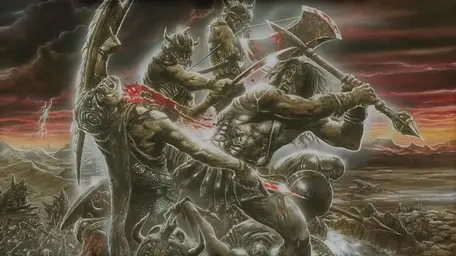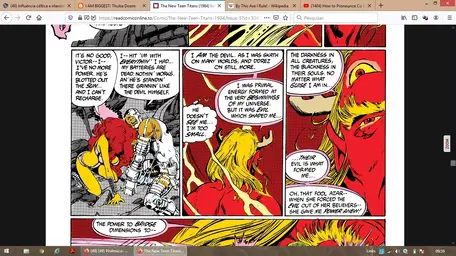influências celtas
Tolkien disse que após a publicação de O Senhor dos Anéis: A Harpa Celta Um símbolo dos celtas, preservado como símbolo nacional na harpa irlandesa, também desempenha um papel recorrente na mitologia da Terra-média. A Balada de Leithian fala de uma tríade de harpistas élficos. No entanto, a primeira menção deste instrumento é encontrada como o instrumento do príncipe élfico Finrod Felagund, que tocava harpa élfica quando conheceu os humanos que imigraram para Beleriand. O anão Thorin Escudo de Carvalho também toca harpa na residência do hobbit Bilbo Bolseiro em Bolsão. Em Gondolin, um dos doze clãs élficos que ali viviam era chamado de "Casa da Harpa", cujo líder se chamava Salgant ( tocador de harpa). O Dragão Galês (Y Ddraig Goch) Tolkien usou o motivo do dragão além de suas histórias sobre a Terra-média no livro infantil Roverandom (1927), onde aparecem o Dragão Branco e o Dragão Vermelho, que alude à lenda do mago Merlin e Rei Vortigern, em que um dragão vermelho e um branco (celtas e saxões) lutaram pela supremacia na Grã-Bretanha. O poema de 1928 The Dragon's Visit também é sobre um dragão. Helmut Birkhan, medievalista germânico e celtologista sobre a influência celta: Ao contrário da derivação de Birkhan da palavra "Orc" do irlandês orc[a], alemão 'Schweinchen, Ferkel', latim porcus, leitão inglês, francês porc[elet], Tolkien escolheu seu nome em homenagem ao orc (demônio) do inglês antigo, que já pode ser encontrado em Beowulf.
Os ancestrais
O Povo Desaparecido Nas sagas celtas da ilha também há ecos da Terra-média de Tolkien. Assim, as histórias do Lebor Gabála Érenn (Livro da Conquista da Irlanda) mostram semelhanças com as imigrações na Terra-média em suas quatro idades. Enquanto na Irlanda o povo mágico dos Túatha Dé Danann derrotou os Formóri demoníacos e monstruosos, em Tolkien foram os Elfos que tentaram se afirmar contra as criaturas de Melkor. Embora derrotados pelos sucessores de Gaedel (Goidelen) ou Milesianos, os Túatha Dé Danann não desapareceram inteiramente da Irlanda. Segundo a lenda, o feiticeiro Amergin dividiu as terras entre os dois grupos, com os conquistadores recebendo as terras na superfície e os Túatha Dé Danann as áreas abaixo. A partir de então eles viveram como Síde em colinas e cavernas ou no chamado outro mundo celta. Tolkien também percebe esse desaparecimento, porque os Elfos (que têm muita semelhança com os Tylwyth Teg) deixam a Terra-média em direção a Valinor ou a ilha costeira de Tol Eressea no final da terceira era, apenas alguns permanecem para trás em reinos ocultos. A partir de então, eles não desempenham mais um papel decisivo na história, porque começa a era dos homens na Terra-média. As idéias associadas ao outro mundo celta (como a designação como "terra da juventude" ou "terra das mulheres") descrevem um reino de condições paradisíacas. Ali cresceriam árvores que sempre dariam frutos, animais que regenerariam sua carne e caldeirões de hidromel que trariam renascimento e felicidade. O mesmo se aplica à terra de Valinor, onde os elfos imortais vivem felizes e seguros ao lado dos Valar. As imigrações para a Terra-média (especialmente Beleriand) nas duas primeiras eras podem ser resumidas da seguinte forma: Primeiro vieram os três povos élficos (Vanyar, Noldor, Teleri), depois as três casas dos humanos (amigos élficos) e finalmente os orientais. A Tír na nÓg (Terra da Eterna Juventude) pode ser vista como um dos modelos para as Terras Imortais (Valinor) e Lyonesse para a ilha de Númenor ou Beleriand, ambas pereceram em uma inundação catastrófica. influência no conceito de Elfos: As imigrações para a Terra-média (especialmente Beleriand) nas duas primeiras eras podem ser resumidas da seguinte forma: Primeiro vieram os três povos élficos (Vanyar, Noldor, Teleri), depois as três casas dos humanos (amigos élficos) e finalmente os orientais. A Tír na nÓg (Terra da Eterna Juventude) pode ser vista como um dos modelos para as Terras Imortais (Valinor) e Lyonesse para a ilha de Númenor ou Beleriand, ambas pereceram em uma inundação catastrófica. influência no conceito de Elfos: As imigrações para a Terra-média (especialmente Beleriand) nas duas primeiras eras podem ser resumidas da seguinte forma: Primeiro vieram os três povos élficos (Vanyar, Noldor, Teleri), depois as três casas dos humanos (amigos élficos) e finalmente os orientais. A Tír na nÓg (Terra da Eterna Juventude) pode ser vista como um dos modelos para as Terras Imortais (Valinor) e Lyonesse para a ilha de Númenor ou Beleriand, ambas pereceram em uma inundação catastrófica. influência no conceito de Elfos:
lendas celtas
A viagem para o oeste Outras influências podem ser encontradas no Immram Brain (o marinheiro de Bran), que, após sua jornada para a ilha dos elfos, tem que perceber que como ser humano ele não tem permissão para retornar ao seu país natal, a Irlanda, uma vez que apenas transitoriedade e morte o aguardam ali. O navegador de Tolkien, Earendil, se sai da mesma forma, pois não tem permissão para retornar à Terra-média. A imagem positiva dos elfos também vem da mitologia celta, então na lenda do roubo de gado de Cooley, Cú Chulainn recebe o apoio de um guerreiro élfico do outro mundo, que vigia seu sono e cura suas feridas. Muitos desses encontros com seres do Outro Mundo são particularmente refletidos nos contos dos quatro ramos do Mabinogion. Tolkien escreveu uma série de escritos ou poemas como Éalá Éarendel Engla Beorhtast (The Voyage of Éarendel the Evening Star, 1914), The Happy Mariners (1915), The Shores of Faery (1915), The Nameless Land (1924/1927), The Death of Saint Brendan (c. 1946) e sua sequência Imram (lançado em 1955) ou Bilbo's Last Song (lançado em 1974). Demandas insatisfeitas para obter uma noiva Outros elementos celtas são o Tochmarc (cortejo), Aithed (sequestro), Tóraigheacht (perseguição), que podem ser encontrados na história de Beren e Lúthien. Um dote semelhante ao exigido por Beren pode ser encontrado, por exemplo, no conto de Culhwch e Olwen, onde o herói deve dominar inúmeras tarefas para conseguir a filha do gigante Ysbaddaden como esposa. Há outro paralelo na caça ao pente e tesoura do javali Twrch Trwyth. Em vez de um javali, Beren deve caçar o lobo Carcharoth, que devorou a Silmaril, o preço de noiva de Lúthien, que Beren deve trazer para Thingol. As transformações dos animais (os filhos de Lir se transformam em cisnes, Gwydion e Gilfaethwy em lobos no Mabinogion) também se refletem neste conto, pois Lúthien e Beren se transformam em uma mulher vampira e um lobo vestindo suas peles despojadas. , o herói também conta com a ajuda de um grande príncipe (Rei Arthur e Finrod, o príncipe dos elfos), ambos mostrando seus anéis como prova de sua identidade. Cada um deles recebe tarefas quase impossíveis, que eles só podem resolver com a ajuda de um cão sobrenatural (Cavall e Huan). As duas donzelas mencionadas nos contos têm carisma e encanto como se fossem a personificação do início da primavera, pois por onde andam as flores desabrocham a seus pés.
A linguagem dos elfos

















 By this Axe I Rule.
By this Axe I Rule. 



































